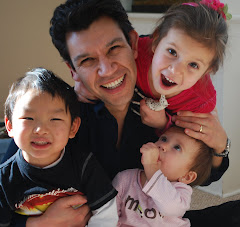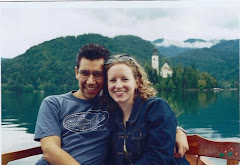



After a short rest, we met Awonde and went to the Ethnological Museum. It was a small, but informative collection exhibiting the different tribes, their tools, and some customs. In addition to the artifacts, it seems to be that some German and English dissertation students and their professors interviewed women from all of the tribes, and then created displays of what they learned. It was interesting to learn that Mursi women feel their clay disks remind people of their commitment (as women) to their culture and their husband. We learned that boiled sorghum is hard to digest, and so Hammers mostly dry their sorghum and grind it with a stone similar to Mexico’s metate (used to grind corn). The women and girls sing while grinding, their calloused hands producing fine flour that they can then make into bread, porridge, or even a pancake-type food. Women from different tribes talked about how honored they were to serve their husbands (fathers, brothers), and that if they wouldn’t be responsible for this, they would feel lifeless and purposeless. It was enlightening to hear about their culture from such intimate interviews, and from the women’s perspectives.

Walking down the mountain from the museum, we crisscrossed false banana huts, mud homesteads, and their gardens: tomatoes, corn, cabbage, several types of beans, papaya, avocado, bananas, onions, garlic, fennel, eucalyptus, coffee, basil, mint… Goats and cows were everywhere, and provide the villagers with milk, butter, and yogurt. As we carefully hiked down the steep hill we were welcomed into several homes. There was a widow whose children had all left to work in the city, a woman and her newborn baby who asked me to send her a copy of their picture, and the groups of children who all wanted to shake our hands.




















Suddenly we all realized there was a murmuring of activity in the distance, and saw a fence around a yard that contained many people. Awonde told us that this was the jail of Jinka, and that it was dinnertime. He also informed us quite casually that this was the jail from which a dangerous prisoner had escaped 2 years ago. He went on to kill some government officials while hiding/seeking refuge in the mountains in different villages. Some of the local tribes saw him as a rebel for their cause, a sort of martyr who would not harm normal citizens (he only targeted gov’t officials as a statement against some governmental policies regarding different tribes). Recently he killed the manager and another employee of the Mago Park (where we were today). Just this week, they captured the escaped convict! It was huge news here, and our guide had been listening to the radio and telling us about it during our trip. It was a shock to actually see inside the jail, looking down from our hilltop view into the yard of incarcerated men... and knowing someone had escaped and then had been returned!
Walking down the mountain- making friends with all of the children, the bottom right picture is the prison:




Farther down the path, we came across a tiny bar and Awonde asked if we would like some honey wine (“tej”). We ducked our heads into the smoky cobalt blue room. Barren of other patrons, our only company was the religious paintings on the wall and a young girl tending to the incense. She passed out flasks of tej, which seemed to have more alcohol content than normal wine, and turned on the World Cup match USA v. Algeria. As the sounds of the game drifted outside, several fans wandered in. We were the only USA supporters in a very pro-Africa environment, yet we all behaved civilly. After the first half (still nil-nil), we decided to visit the Jinka market.












Here are some women selling homemade injera. There were different kinds: pure teff, teff mixed with maize, sorghum, wheat. In the second picture you can see the long row of women with their circular packages of injera, waiting to be bought and eaten for dinner!


Scenes from the Jinka market. Top left, the sewing machines set up for the tailors (men) to repair any rips. Women sell fruits, vegetables, chiles, legumes, and coffee (in the bottom left picture the black are roasted coffee beans).






The market sells almost anything an Ari family would need for the week: the women lined up with different types of injera, grains, vegetables and fruits, homemade butter, and collected honey among other goods. We bought a cloth used by the Hamer men, some tea, and a CD with Ethiopian pop music. Checking on the game in a little electronics store- as soon as we ducked our heads in, USA scored, the game ended, and we knocked out one of the last African teams. We headed back to the hotel smiling, crossed the old airstrip that is now the town sqare, zigzagged through the goats nibbling the grass under an abandoned airplane, and thanked Awonde for sharing his town with us.















2 comments:
You tell your story so well, thank you for sharing!
Plus, I'm still waiting for the gotcha pictures!
I have thoroughly enjoyed reading your blog! I love reading about your travels and seeing the fabulous pictures. You are doing exactly what we hope to do....to truly absorb the culture and explore as much as possible. I would love to connect with you through email if you have time (when you get home and are adjusted of course) to get some tips for our future trip to Ethiopia.
We wish you all the best and thanks for sharing your amazing journey with us!!!!
pvsjourneyoflove.blogspot.com
vmdetorres@hotmail.com
Post a Comment